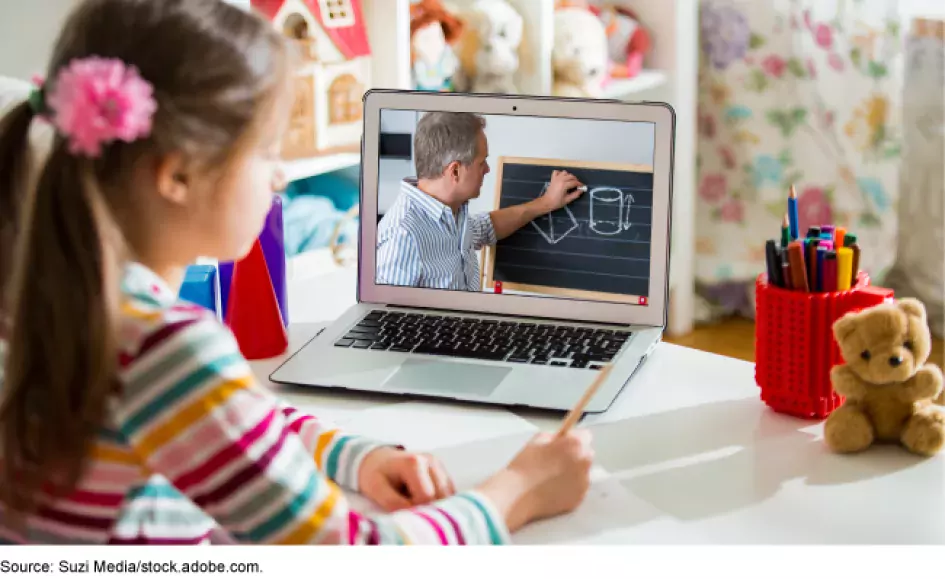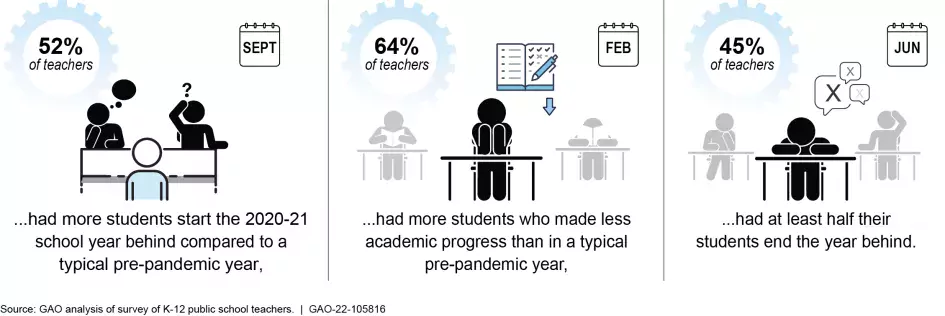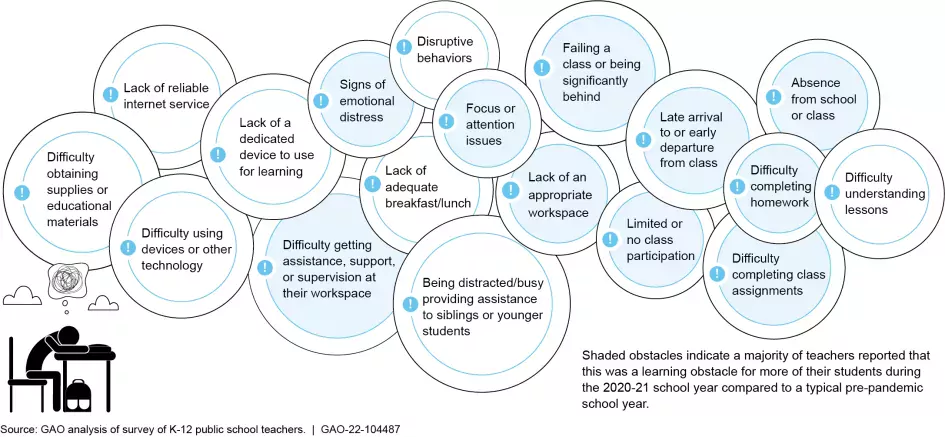The Three Rs of Pandemic Learning: Roadblocks, Resilience, and Resources
The COVID-19 pandemic upended school as we’ve known it. Across the country, school systems struggled to provide a stable learning environment for students while also protecting their health.
In today’s WatchBlog post, we look at our three new reports on pandemic-related learning loss in the 2020-21 school year. What challenges did teachers tell us students faced? How were these challenges overcome? And what are the potential long-term impacts of COVID’s disruption on education?
Image

How did students’ learning fare?
The 2020-21 school year was tough on kids. To better understand what they were facing, we conducted a nationwide survey of teachers and held discussion groups with teachers, principals, and parents about their experiences that year.
Teachers told us that they witnessed substantial learning loss—that is, their students lost ground from the prior year or did not learn as much as they normally would (or both).
Over half of teachers we surveyed said more of their students started the 2020-21 school year behind and made less progress throughout, compared to a typical school year. Teachers of the youngest students in particular—those in kindergarten through second grade—said their students started the year behind. To some extent, this was expected, as these kids were in their first years of school and learning how to be students when schools started closing in the spring of 2020.
Academic Progress during School Year 2020-21
Image

What kept students from learning?
Teachers told us their students faced many challenges engaging in school. Some had trouble getting help at home, some were under added stress because of the pandemic, and some faced many new hardships.
Frequent absences became a problem, with 63% of teachers reporting more students absent in 2020-21 compared to a typical year. In fact, half of public school teachers we surveyed told us they had at least one student who never showed up for class all year.
Obstacles to Learning during School Year 2020-21
Image

COVID-19 did not hit communities equally, and schools reflected some of these inequities. Students in already vulnerable groups were often harder hit. For example:
- Teachers with mostly high-poverty students who were learning virtually were 6 to 23 times more likely to have students who lacked an appropriate workspace, compared to other teachers at their grade level;
- Teachers with students learning English virtually were more likely to have students who had difficulty getting assistance, support, or supervision at their workspace compared to a typical year; and
- Teachers with kindergarten through second grade students were more likely to have students with difficulty using technology to participate in learning, compared to those in other grades.
In November 2020, we reported on challenges students with disabilities faced with virtual learning.
What teaching strategies helped students learn?
Teachers tried all sorts of methods—such as movement breaks and meetings with counselors—to help students overcome learning roadblocks, but said only a few strategies helped at least half of their students. Teachers told us using technology apps or learning platforms to receive students’ work and to provide feedback were helpful.
Most teachers tried letting students access lessons at any time during the day (asynchronous instruction), but many teachers told us that it did not help their students make academic progress.
Teachers of English learners and younger students (kindergarten through second grade) told us their students benefited from more personalized attention like working in small groups. Teachers also found movement breaks helpful in the lower grades.
Where do we go from here?
The last two years have been unimaginably hard for students and teachers, and have required immense resilience from both. On top of their academic struggles, many students are adjusting to completely new realities after losing parents or other caregivers to COVID-19. English learners and students at majority non-White and high-poverty schools have fallen further behind other students. Teachers are exhausted and thinking about leaving their jobs.
Educators and parents told us about resources that could help them address some big challenges: better engaging students, increasing teacher capacity, strengthening school-family connections, and ensuring students have the technology needed for learning. They emphasized the importance of addressing students’ mental health needs as they recover from the stress and trauma of the last two years in what is sure to be a long return to “normal.”
To learn more about our work on pandemic learning loss, check out our reports linked throughout the blog post. In addition, the disruptions and adjustments of the pandemic may have taken a toll on teachers and we have a report on teacher shortages that will be out in the fall. Check back at GAO.gov to find out more.
- Comments on GAO’s WatchBlog? Contact blog@gao.gov.





